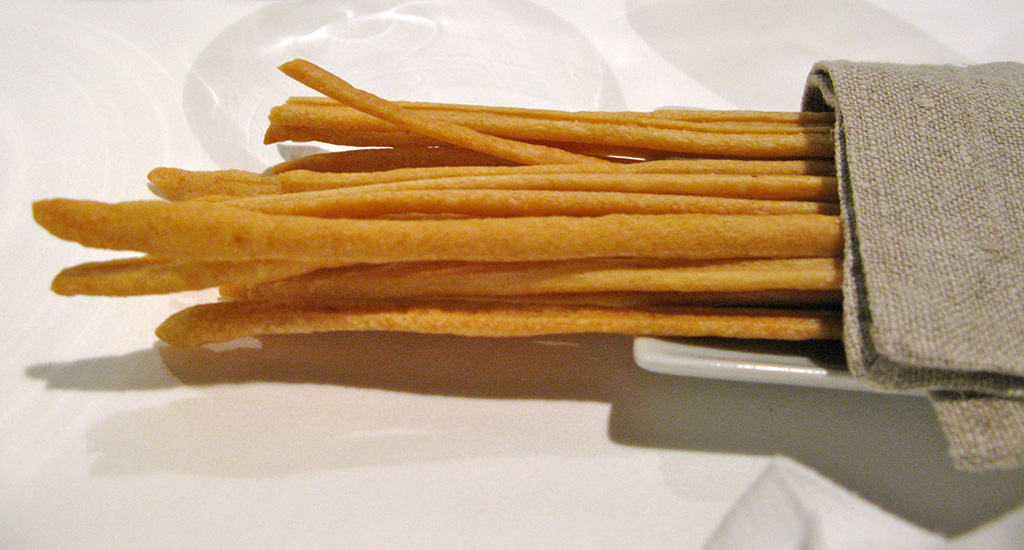
The grissini are one of Turin’s most famous delicacies and they consist in a particular kind of breadsticks; about their story there are two versions.
The first version dates the grissini from the second half of ‘300, when the bread was being sold at a penny per piece. Owing to the inflation that struck the Piedmont at that time, the shape of bread called “grissia” became gradually getting lighter and thin up to become the “gherssin”.
The second version, most legendary, is linked to Vittorio Amedeo II. He was nine years old when, after his father’s death, he became Duke of Savoy. His poor health worried his mother who turned to the Royal Doctor who in turn spoke to the baker. After careful evaluation medicine designed for the young leader was identified in a diet that included bread crumbly and easy to digest. The baker of the Duke, whose name was Antonio Brunero, invented the original recipe of breadsticks, called grissini.
Regardless of their origin, the breadsticks had always much success with the nobles. King Carlo Felice was especially dainty and he ate them sitting in his box at the theater. At the European Courts “les petits baton de Turin” was tasted with curiosity. In the France of Louis XIV someone attempted an imitation, by getting to Paris two craftsmen from Turin, but the air and water of the Seine were not so good as those of the Po and the results were modest. Napoleon sent regularly imperial couriers in Turin to stock the “gherssin” because they seem to relieve his ulcer.

Leave a Reply